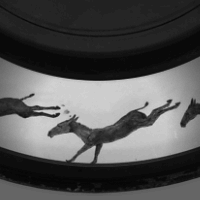
The Lumière brothers, Auguste Marie Louis Nicolas Lumière and Louis Jean Lumière, were French manufacturers of photography equipment, best known for their Cinématographe motion picture system and the short films they produced between 1895 and 1905, which places them among the earliest filmmakers.

A zoetrope is one of several pre-film animation devices that produce the illusion of motion by displaying a sequence of drawings or photographs showing progressive phases of that motion. It was basically a cylindrical variation of the phénakisticope, suggested almost immediately after the stroboscopic discs were introduced in 1833. The definitive version, with easily replaceable picture strips, was introduced as a toy by Milton Bradley in 1866 and became very successful.

Eadweard Muybridge was an English photographer known for his pioneering work in photographic studies of motion, and early work in motion-picture projection. He adopted the first name "Eadweard" as the original Anglo-Saxon form of "Edward", and the surname "Muybridge", believing it to be similarly archaic.

The Kinetoscope is an early motion picture exhibition device, designed for films to be viewed by one person at a time through a peephole viewer window. The Kinetoscope was not a movie projector, but it introduced the basic approach that would become the standard for all cinematic projection before the advent of video: it created the illusion of movement by conveying a strip of perforated film bearing sequential images over a light source with a high-speed shutter. First described in conceptual terms by U.S. inventor Thomas Edison in 1888, it was largely developed by his employee William Kennedy Laurie Dickson between 1889 and 1892. Dickson and his team at the Edison lab in New Jersey also devised the Kinetograph, an innovative motion picture camera with rapid intermittent, or stop-and-go, film movement, to photograph movies for in-house experiments and, eventually, commercial Kinetoscope presentations.
Bullet time is a visual effect or visual impression of detaching the time and space of a camera from those of its visible subject. It is a depth enhanced simulation of variable-speed action and performance found in films, broadcast advertisements, and realtime graphics within video games and other special media. It is characterized by its extreme transformation of both time, and of space. This is almost impossible with conventional slow motion, as the physical camera would have to move implausibly fast; the concept implies that only a "virtual camera", often illustrated within the confines of a computer-generated environment such as a virtual world or virtual reality, would be capable of "filming" bullet-time types of moments. Technical and historical variations of this effect have been referred to as time slicing, view morphing, temps mort and virtual cinematography.

Rotoscoping is an animation technique that animators use to trace over motion picture footage, frame by frame, to produce realistic action. Originally, animators projected photographed live-action movie images onto a glass panel and traced over the image. This projection equipment is referred to as a rotoscope, developed by Polish-American animator Max Fleischer, and the result is a rotograph. This device was eventually replaced by computers, but the process is still called rotoscoping.
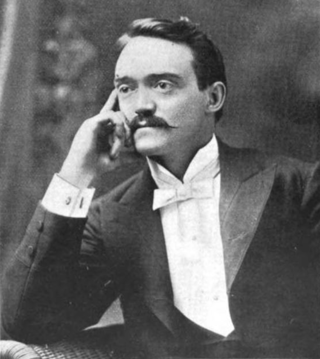
Charles Francis Jenkins was an American engineer who was a pioneer of early cinema and one of the inventors of television, though he used mechanical rather than electronic technologies. His businesses included Charles Jenkins Laboratories and Jenkins Television Corporation. Over 400 patents were issued to Jenkins, many for his inventions related to motion pictures and television.
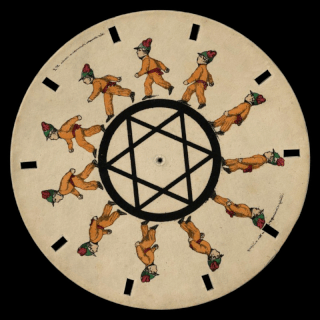
The phenakistiscope was the first widespread animation device that created a fluent illusion of motion. Dubbed Fantascope and Stroboscopische Scheiben by its inventors, it has been known under many other names until the French product name Phénakisticope became common. The phenakistiscope is regarded as one of the first forms of moving media entertainment that paved the way for the future motion picture and film industry. Like a GIF animation, it can only show a short continuous loop.

A movie projector is an opto-mechanical device for displaying motion picture film by projecting it onto a screen. Most of the optical and mechanical elements, except for the illumination and sound devices, are present in movie cameras. Modern movie projectors are specially built video projectors.
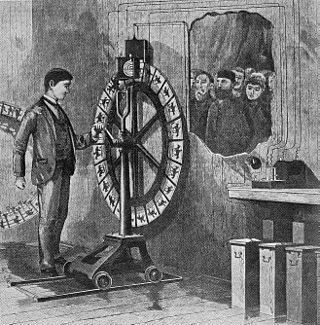
The Elektrischen Schnellseher or Electrotachyscope was an early motion picture system developed by chronophotographer Ottomar Anschütz between 1886 and 1894. He made at least seven different versions of the machine, including a projector, a peep-box viewer and several versions with illuminated glass photographs on a rotating wheel viewed on a 12.5 cm wide milk-glass screen by up to seven people at the same time.

Chronophotography is a photographic technique from the Victorian era which captures a number of phases of movements. The best known chronophotography works were mostly intended for the scientific study of locomotion, to discover practical information for animal handlers and/or as reference material for artists. Although many results were not intended to be exhibited as moving pictures, there is much overlap with the more or less simultaneous quest to register and exhibit photographic motion pictures.

Precursors of film are concepts and devices that have much in common with the later art and techniques of cinema.
The decade of the 1880s in film involved some significant events.
The decade of the 1870s in film involved some significant events.

The Horse in Motion is a series of cabinet cards by Eadweard Muybridge, including six cards that each show a sequential series of six to twelve "automatic electro-photographs" depicting the movement of a horse. Muybridge shot the photographs in June 1878. An additional card reprinted the single image of the horse "Occident" trotting at high speed, which had previously been published by Muybridge in 1877.

Kingston Museum is an accredited museum in Kingston upon Thames, southwest London, England. The Scottish-American philanthropist Andrew Carnegie funded the building of the museum, which adjoins Kingston Library. The museum runs a lively programme of temporary exhibitions and events and welcomes all visitors free of charge. Built in 1904, the museum features three permanent exhibitions: "Ancient Origins" details the borough's past from prehistory to Anglo-Saxon times; "Town of Kings" charts Kingston's development as a market town from the medieval period until the 1940s; and "Eadweard Muybridge" presents material related to the noted photographer, a native of Kingston.
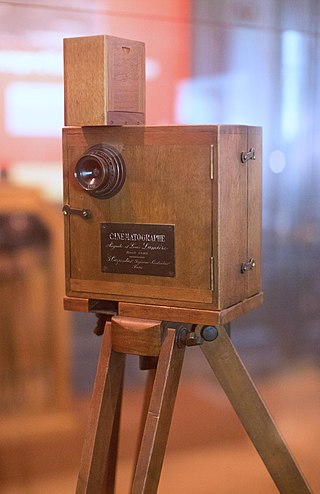
The history of film technology traces the development of techniques for the recording, construction and presentation of motion pictures. When the film medium came about in the 19th century, there already was a centuries old tradition of screening moving images through shadow play and the magic lantern that were very popular with audiences in many parts of the world. Especially the magic lantern influenced much of the projection technology, exhibition practices and cultural implementation of film. Between 1825 and 1840, the relevant technologies of stroboscopic animation, photography and stereoscopy were introduced. For much of the rest of the century, many engineers and inventors tried to combine all these new technologies and the much older technique of projection to create a complete illusion or a complete documentation of reality. Colour photography was usually included in these ambitions and the introduction of the phonograph in 1877 seemed to promise the addition of synchronized sound recordings. Between 1887 and 1894, the first successful short cinematographic presentations were established. The biggest popular breakthrough of the technology came in 1895 with the first projected movies that lasted longer than 10 seconds. During the first years after this breakthrough, most motion pictures lasted about 50 seconds, lacked synchronized sound and natural colour, and were mainly exhibited as novelty attractions. In the first decades of the 20th century, movies grew much longer and the medium quickly developed into one of the most important tools of communication and entertainment. The breakthrough of synchronized sound occurred at the end of the 1920s and that of full color motion picture film in the 1930s. By the start of the 21st century, physical film stock was being replaced with digital film technologies at both ends of the production chain by digital image sensors and projectors.
The history of animation started long before the development of cinematography. Humans have probably attempted to depict motion as far back as the paleolithic period. Much later, shadow play and the magic lantern offered popular shows with projected images on a screen, moving as the result of manipulation by hand and/or minor mechanics. In 1833, the stroboscopic disc introduced the stroboscopic principles of modern animation, which decades later would also provide the basis for cinematography. This article covers the period up to 1888, when celluloid film base was developed, a technology that would become the foundation for over a century of film.

Animal Locomotion: An Electro-photographic Investigation of Consecutive Phases of Animal Movements is a series of scientific photographs by Eadweard Muybridge made in 1884 and 1885 at the University of Pennsylvania, to study motion in animals. Published in 1887, the chronophotographic series comprised 781 collotype plates, each containing up to 36 pictures of the different phases of a specific motion of one subject.

